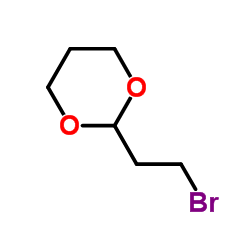| Structure | Name/CAS No. | Articles |
|---|---|---|
 |
2-(2-Bromoethyl)-1,3-dioxane
CAS:33884-43-4 |
| Structure | Name/CAS No. | Articles |
|---|---|---|
 |
2-(2-Bromoethyl)-1,3-dioxane
CAS:33884-43-4 |